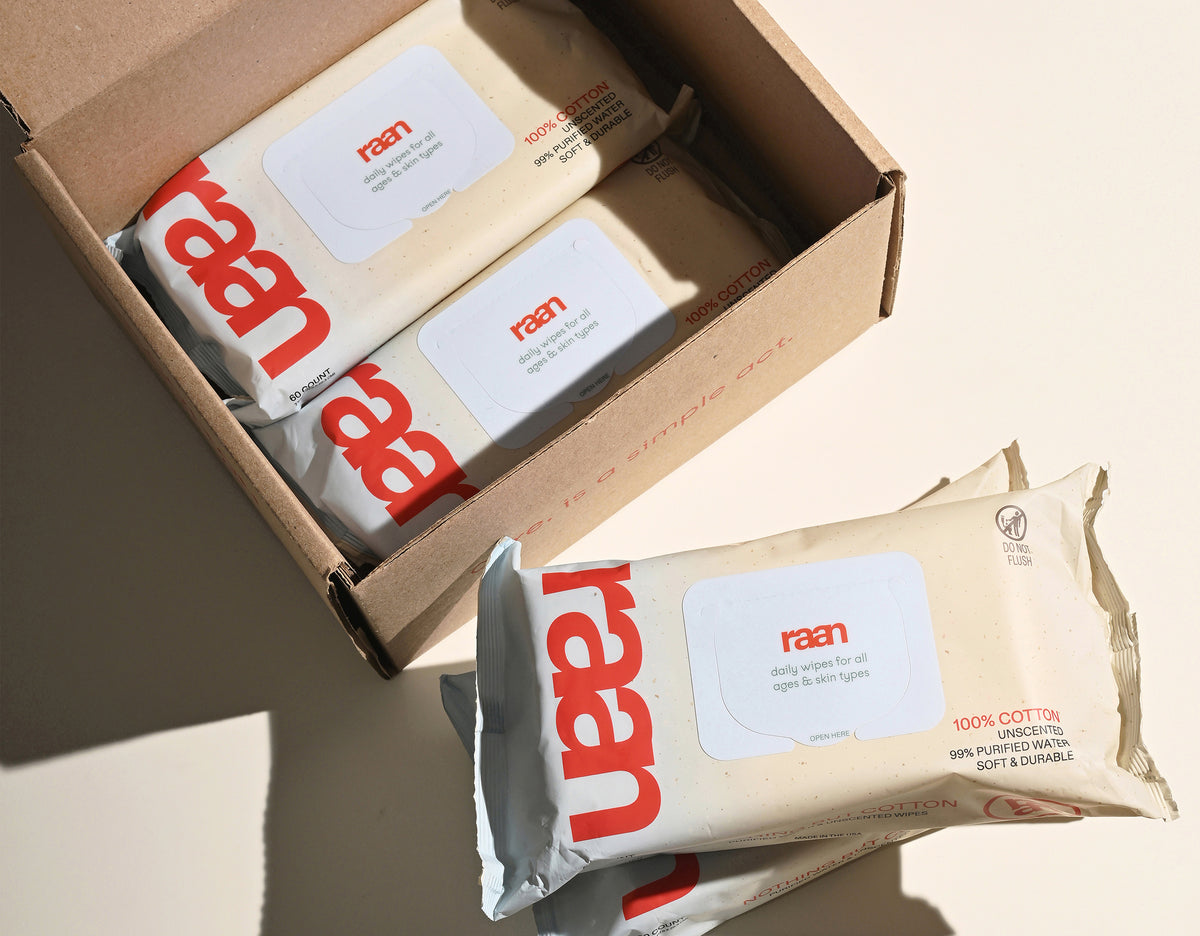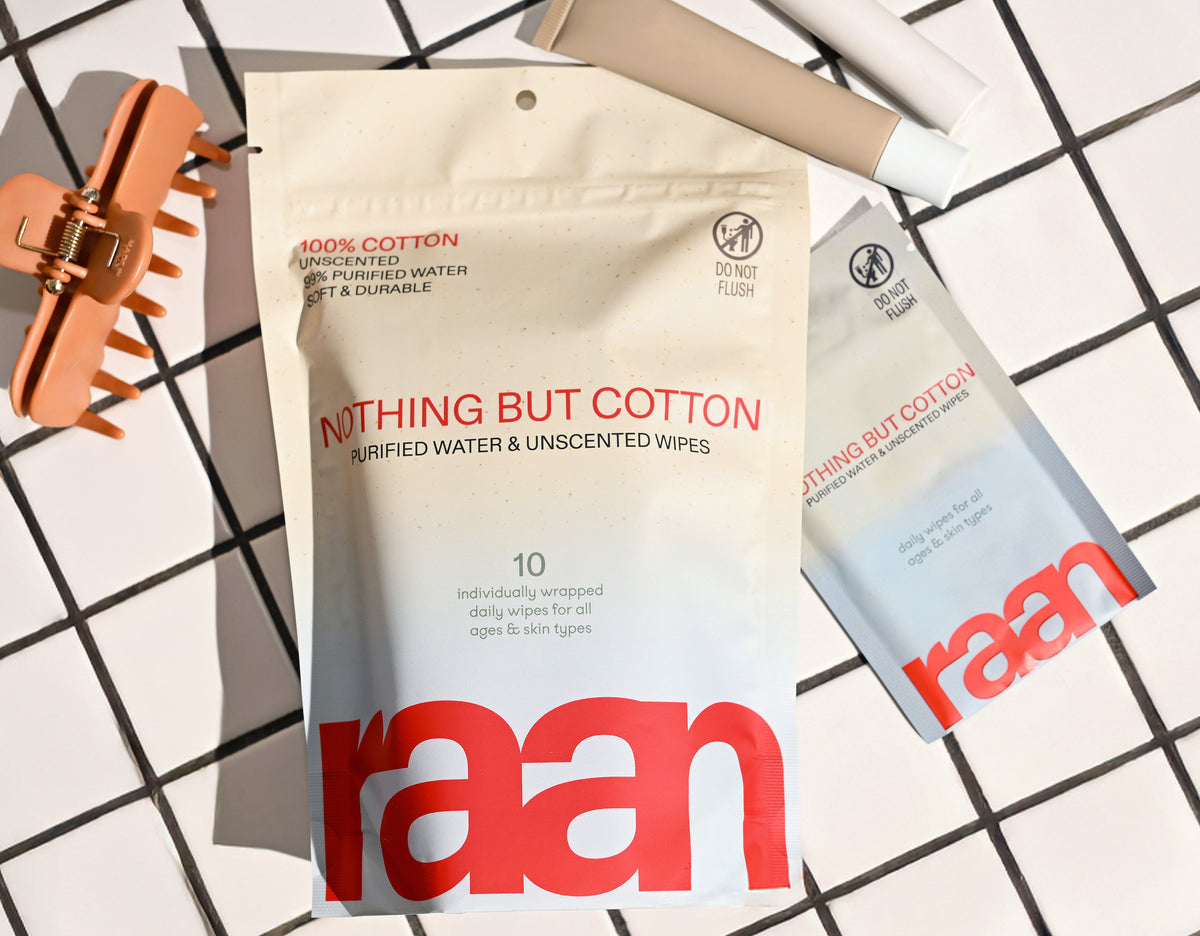Key Takeaways
- Choosing between Huggies wipes and unbleached cotton involves balancing convenience with ingredient safety.
- Huggies wipes are widely recognized and easily accessible in the market.
- The main consideration is the material's impact on your skin and your baby's skin.
- Effectiveness in handling everyday messes is a crucial factor in this comparison.
Table of Contents
- What Are Huggies Wipes? Brand Origins, Product Lineup, and Everyday Uses
- Decoding Ingredients and Safety Profile, Inside Huggies Formulation and Testing
- Why Choose Wipes for Sensitive Skin? The Science Behind Gentle Cleaning
- Pack Options and Practical Ways to Buy, Sizes, Subscriptions, and Cost per Use
- How to Pick Wipes for Your Family, Decision Guide by Age, Allergies, and Use Case
- Huggies vs. Raan Unbleached Cotton Wipes, Side-by-Side Comparison for Real-Life Messes
- The Everyday Mess Test, Wipes for More than Diapers
- Preventing Common Wipe Problems, Dryness, Tearing, Storage & Odor Solutions
- Wipes Disposal and Environmental Impact, Responsible Choices, Facts & Myths
The Practical Guide to Huggies Wipes vs. Raan's Unbleached Cotton, Honest Choices for Everyday Mess
When you're searching for wipes huggies, you're likely weighing convenience against ingredient safety, and that's exactly the right question. Huggies dominates the wipes market with familiar packaging and widespread availability, but the real comparison isn't just about brand recognition. It's about what's actually touching your skin, your baby's skin, and how those materials hold up to real-life messes.
The choice between conventional synthetic wipes and unbleached cotton alternatives comes down to material integrity, ingredient transparency, and long-term skin safety. We'll break down exactly what you're getting with each option, no marketing fluff, just the facts that matter for your everyday cleaning routine.
If you want a portable solution for on-the-go messes, consider the 100% cotton pocket wipe for sensitive skin for travel, gym bags, or quick cleanups.
What Are Huggies Wipes? Brand Origins, Product Lineup, and Everyday Uses
Huggies launched as part of Kimberly-Clark's baby care division in 1978, building their wipes reputation on the foundation of their diaper success. Today, they offer multiple product lines targeting different needs and budgets across the baby care spectrum.
Their current lineup includes Natural Care (enriched with aloe, cucumber, and vitamin E), Sensitive (unscented with cocoa and shea butter), Simply Clean (basic formula for budget-conscious families), and Special Delivery (plant-based blend). Pack sizes range from travel-friendly 16-count pouches to bulk 11-pack cases containing up to 704 wipes.
Beyond diaper changes, families use wipes huggies for sticky fingers, post-meal face cleaning, car spills, and quick hand refreshes. The flip-top packaging design aims for one-handed dispensing, crucial during diaper changes or when juggling multiple tasks with kids.
Decoding Ingredients and Safety Profile, Inside Huggies Formulation and Testing

Huggies wipes typically contain water, phenoxyethanol (synthetic preservative), caprylyl glycol, sodium citrate, citric acid, and various moisturizing agents. Their Natural Care line adds aloe extract, cucumber extract, and vitamin E, while Sensitive versions include cocoa butter and shea butter for extra moisture.
Reading the Label: "Dermatologist-tested" means the product underwent patch testing on a small group, it doesn't guarantee no reactions will occur. "Hypoallergenic" indicates lower likelihood of allergic reactions, but isn't regulated by the FDA.
The synthetic preservative system in most Huggies formulations helps prevent bacterial growth in the moist environment, extending shelf life significantly. However, these same preservatives can trigger sensitivity in some users, particularly those with compromised skin barriers or existing dermatitis.
Why Choose Wipes for Sensitive Skin? The Science Behind Gentle Cleaning
Sensitive skin benefits from minimal ingredient formulas because fewer components mean fewer potential irritants. The skin's acid mantle, a protective layer with a pH around 5.5, can be disrupted by harsh preservatives or synthetic fragrances, leading to increased sensitivity and potential rashes.
Water content matters significantly. Wipes with 99% water content rely on the natural cleansing properties of water rather than chemical surfactants to remove soil and bacteria. This approach reduces the risk of stripping natural skin oils while still achieving effective cleaning. For more on this topic, read about Huggies water wipes and how they compare to other options.
Clinical guidance suggests applying gentle wipes within three minutes of soiling for optimal skin protection, particularly in the diaper area where prolonged contact with waste can compromise the skin barrier. The material itself, whether synthetic blend or natural fiber, affects how the wipe interacts with delicate skin surfaces.
Pack Options and Practical Ways to Buy, Sizes, Subscriptions, and Cost per Use
Huggies offers strategic pack sizing: 16-count travel packs for diaper bags, 56-count flip-top packs for daily use, and bulk cases up to 704 wipes for families prioritizing cost-per-unit savings. The flip-top design includes a plastic lid that theoretically maintains moisture, though effectiveness depends on proper resealing after each use.
Subscription services through major retailers typically offer 15-20% savings plus automatic delivery. For a newborn using 8-10 wipes daily, a 704-count bulk pack lasts approximately 10-12 weeks, making the cost calculation straightforward for budget planning. If you're wondering how many wipes you'll actually need, check out this guide on how many wipes do I need for different family scenarios.
| Pack Size | Cost per Wipe | Best For |
|---|---|---|
| 16-count travel | $0.08-0.12 | Diaper bag, car emergency |
| 56-count flip-top | $0.04-0.06 | Daily home use |
| 704-count bulk | $0.02-0.04 | High-usage families |
How to Pick Wipes for Your Family, Decision Guide by Age, Allergies, and Use Case

For newborns under two months, prioritize unscented, water-based formulas with minimal preservatives. The skin barrier isn't fully developed, making gentle ingredients essential. Test any new wipe on a small area behind the knee, wait 10 minutes before full use to check for reactions.
Toddlers and older children can typically handle more robust formulations, but fragrance-free options remain safer for daily use. Consider your primary use: if you're building a routine for home and travel, the mess-ready pack offers a versatile selection of wipes for every situation.
Huggies vs. Raan Unbleached Cotton Wipes, Side-by-Side Comparison for Real-Life Messes
When choosing between wipes huggies offers and Raan's unbleached cotton alternative, the differences go beyond brand recognition. Material composition, ingredient transparency, and packaging design create distinct experiences for families handling everyday messes.
Huggies wipes typically combine polyester and rayon fibers with water-based solutions containing multiple preservatives, moisturizers, and sometimes fragrances. Their flip-top plastic containers offer convenience but contribute significantly to household plastic waste. Raan takes a fundamentally different approach: unbleached, 100% cotton material paired with just five EWG-verified ingredients in packaging that uses 70% less plastic.
| Feature | Huggies Natural Care | Raan Cotton Wipes |
|---|---|---|
| Material | Polyester/rayon blend | Unbleached 100% cotton |
| Ingredient Count | 8-12 ingredients | 5 ingredients |
| Preservatives | Synthetic preservatives | Food-grade only |
| Third-Party Verification | Dermatologist-tested | EWG Verified |
| Packaging Plastic | Hard plastic flip-top | 70% plastic reduction |
| Fragrance Options | Scented and unscented | Naturally unscented |
The cotton versus synthetic blend difference affects both skin contact and environmental impact. Cotton fibers naturally biodegrade, while polyester components persist in landfills. For sensitive skin scenarios, newborns, eczema-prone family members, or post-workout cleanups, the minimal ingredient list and natural material composition provide gentler contact without compromising cleaning effectiveness. For a comprehensive comparison, see this article on baby wipes huggies and how they stack up against cotton alternatives.
The Everyday Mess Test, Wipes for More than Diapers
Real families use wipes far beyond diaper changes. Pet paws after muddy walks, sticky toddler fingers post-snack, gym bag refreshers, and sunscreen removal all demand reliable cleaning power. Testing wipes huggies and Raan across these scenarios reveals practical differences in performance and skin comfort.
For pet cleanups, fold one wipe in quarters to maximize surface area. The cotton texture handles dirt and debris without tearing, while synthetic blends can pill or shed fibers. Sticky food situations require gentle circular motions within 10 minutes of contact, waiting longer allows sugars to set. Both brands handle standard messes, but cotton's natural absorbency excels with liquid spills.
Multi-Use Reality Check
Families using wipes for faces, hands, and surfaces need formulations safe enough for repeated skin contact. Food-grade preservatives and unbleached materials eliminate concerns about transferring synthetic residues to sensitive areas.
Post-exercise scenarios test wipe durability and skin gentleness. Cotton maintains structural integrity when wet, providing consistent cleaning surface. The absence of synthetic fragrances prevents irritation on already-sensitized skin from sweat and friction. For removing sunscreen and makeup, the natural fiber texture effectively lifts product without harsh rubbing. If you're looking to try a variety of options, the starter set is a great way to sample different cotton wipes for your family's needs.
Preventing Common Wipe Problems, Dryness, Tearing, Storage & Odor Solutions

Wipe performance deteriorates rapidly with improper storage. Temperature fluctuations, air exposure, and packaging failures create dry, ineffective products that waste money and frustrate users during critical moments.
Flip-top packs require complete closure after each use, press the lid flat to eliminate air gaps. Store packages at 68-74°F, avoiding direct sunlight and hot car interiors where temperatures exceed 90°F. These conditions evaporate moisture and break down preservative effectiveness. For travel, transfer small quantities to airtight containers rather than exposing entire packages to temperature swings.
Tearing issues often stem from manufacturing shortcuts in fiber bonding. Synthetic blends may separate along fiber lines when saturated, while properly processed cotton maintains integrity. If wipes consistently tear, the material quality likely compromises cleaning effectiveness. Odor problems indicate preservative breakdown or bacterial growth, discard packages that smell off or have been stored improperly for extended periods.
The "fragrance-free" label doesn't guarantee odor absence. Some manufacturers add masking fragrances to hide chemical scents, creating confusion for sensitive users. Naturally unscented products like Raan's cotton wipes avoid this issue entirely by using minimal, transparent formulations that don't require scent masking. For more on the science behind wet wipes, see this overview on wet wipes and their composition.
Wipes Disposal and Environmental Impact, Responsible Choices, Facts & Myths
The "flushable" wipes myth continues damaging municipal water systems despite clear evidence that no wipes, including those marketed as flushable, should enter toilets. This applies to all wipes huggies produces and virtually every other brand. Proper disposal means household trash, not sewage systems.
Synthetic fiber wipes contribute to microplastic pollution as they break down in landfills. Polyester and rayon components persist for decades, gradually releasing particles into soil and water. For a scientific perspective on the environmental and health impacts of wipes, see this external resource from the National Institutes of Health.
Frequently Asked Questions
What are the main differences between Huggies wipes and unbleached cotton wipes in terms of ingredient safety and skin sensitivity?
Huggies wipes use a blend of synthetic fibers and preservatives designed for gentle cleaning, but they often contain plastic fibers and additives that may irritate very sensitive skin. Unbleached cotton wipes, like ours, are made from 100% natural cotton with a minimalist formula of just five EWG-verified ingredients, offering a simpler, more transparent option that reduces the risk of irritation for sensitive skin.
How do Huggies wipes perform in handling everyday messes beyond diaper changes?
Huggies wipes are effective at cleaning typical baby messes and quick touch-ups thanks to their moist texture and sturdy material. However, synthetic fibers can sometimes leave residue or feel less breathable on skin. Cotton wipes provide a soft, absorbent alternative that works well for a variety of everyday messes on both skin and surfaces, with the added benefit of being plastic-free and gentle enough for frequent use.
What should I consider when choosing the right type and pack size of wipes for my family's specific needs?
Think about your primary uses, whether it’s diaper changes, face and hand cleanups, or on-the-go refreshes, and how often you’ll use them. Smaller packs are great for travel or quick trips, while bulk options suit home use. Also, consider skin sensitivity and ingredient transparency; simpler, natural materials like unbleached cotton can offer peace of mind for delicate skin and reduce exposure to unnecessary chemicals.
Are Huggies wipes truly hypoallergenic and safe for babies with sensitive skin?
Huggies wipes are formulated to be gentle and often marketed as hypoallergenic, but they still contain synthetic preservatives and plastic fibers that can cause reactions in some sensitive babies. For families prioritizing ingredient transparency and minimal exposure, wipes made from unbleached cotton with food-grade preservatives provide a safer, more straightforward option that supports sensitive skin without compromise.






